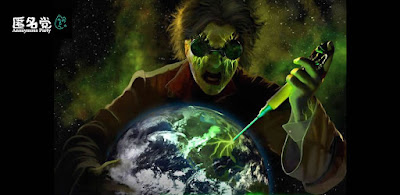金印(きんいん)は金でつくられた印章のこと。
東アジアの冊封体制の元では、皇帝が諸国の王を臣下と認める証しとして、その定められた地位に応じ玉印・金印・銀印・銅印などが与えられた(印綬)。日本では、福岡県福岡市東区の志賀島で発見された「漢委奴国王印」が最も著名であり、国宝に指定され福岡市博物館(福岡市早良区)に収蔵されている。また、金印が発見されたとされる場所には現在金印公園がある。
滇に与えられた「滇王之印」、光武帝の子である広陵思王 劉荊に与えられた「廣陵王璽」が中国で出土しており、「魏志倭人伝」には卑弥呼に「親魏倭王」の金印を与えたことが記されている。
日本の現在の国璽・大韓民国の国璽も金印であり、支那(中華民国)の国璽は玉印である。
で、米国にある宗主国様からいただいた大切な亀の金印は鬼畜米兵が盗んだ物ニダ!返すニダ!・・・と騒ぎ始めたようです。(爆w
→亀
→Gilt Bronze
、、、(w
Korean officials allege that this gilt bronze seal — which has been part of LACMA’s collection since 2000 — is one of more than 40 such signets from the Joseon Dynasty that went missing after the end of the Korean War. (LACMA)
Mexico City's Museo Jumex explores art's modern edge Mexico City's Museo Jumex explores art's modern edge
Arkansas' Crystal Bridges Museum is art-scouting L.A. Arkansas' Crystal Bridges Museum is art-scouting L.A.
USC absorbs Pasadena's Pacific Asia Museum in friendly takeover USC absorbs Pasadena's Pacific Asia Museum in friendly takeover
By Matt Stevens
November 25, 2013, 8:30 p.m.
South Korean government officials want the United States to investigate the circumstances surrounding a 16th century Korean royal seal that they believe was stolen out of a shrine in Seoul before being acquired by the Los Angeles County Museum of Art.
Korean officials allege that the gilt bronze seal — which has been part of LACMA's collection since 2000 — is one of more than 40 such signets from the Joseon Dynasty that went missing after the end of the Korean War. The Korean government has long thought some of the missing artifacts were stolen by American soldiers and taken to the United States.
A federal law enforcement source said U.S. officials were looking into the Korean seal but would not provide details. The source spoke on the condition of anonymity because the investigation was ongoing.
In a statement, LACMA said there was "credible evidence" that its seal was "removed unlawfully from the National Shrine in Korea."
But museum spokeswoman Miranda Carroll said "LACMA is not in a position to comment" about how it was acquired.
"While LACMA has not received a formal request from the Korean national government, we have reached out to them to discuss the results of our research and a mutually satisfactory resolution, including the return of the Royal Seal to Korea," the statement said.
Korean officials said the government became aware that the royal seal was at LACMA in December 2010 and began discussions in May 2012 with federal investigators about the possible return of the seal.
A year later, the Korean government asked Homeland Security to conduct a formal investigation into the matter, said Youngsan Kim, director of the Korean Cultural Center in Los Angeles. Now, he said, they are awaiting results.
"This case is very delicate," Kim said.
Seals were carved to commemorate royal rituals, and also used as a form of self-identification, social recognition and art, according to U.S. Immigrations and Customs Enforcement statements and descriptions from the LACMA website.
LACMA's "Royal Seal of Queen Munjeong" has a square body with a knob in the shape of an animal — in this case a turtle.
This month, ICE agents seized nine other Korean seals from Escondido. Authorities said the seals were turned over by the family of a deceased Marine lieutenant who had served in the Korean War. Five of the seals were determined to be part of the missing group from Korea's Joseon Dynasty.
Officials don't believe that case is related to the LACMA seal.
In September, ICE agents returned a currency printing plate to Korean officials. Federal investigators had traced the plate to a deceased American serviceman who reportedly brought it back to Michigan after a tour of duty in the Korean War. An ICE spokeswoman said the action marked the first time ICE repatriated a cultural artifact to South Korea since the agency's creation in 2003.
The debate over the Korean seal comes as museums and universities across the world are grappling with artifacts that may have been illegally looted.
Cornell University is preparing to forfeit a vast collection of ancient cuneiform tablets to Iraq. In May, the Metropolitan Museum of Art agreed to return two ancient statues to Cambodia after receiving evidence they had been smuggled out of the country illegally. And as recently as 2008, federal agents conducted a raid on four Southern California museums, including LACMA, as part of a probe into alleged import violations and tax fraud.
More than 7,150 artifacts have been returned to 26 countries since 2007, according to an ICE statement.
matt.stevens@latimes.com
Times staff writers Jason Felch and Victoria Kim contributed to this report.
Copyright © 2013, Los Angeles Times
http://www.latimes.com/local/la-me-adv-korean-seal-20131126,0,1708404.story#ixzz2m3cGqyid
http://www.latimes.com/local/la-me-adv-korean-seal-20131126,0,1708404.story#axzz2m3br1fu
、、、(爆wwwww



0 件のコメント:
コメントを投稿